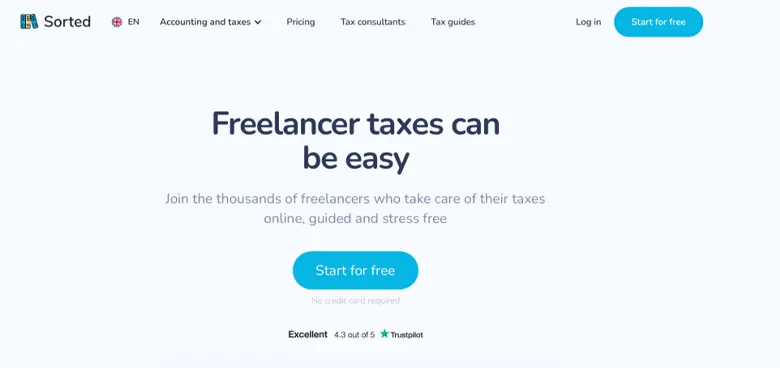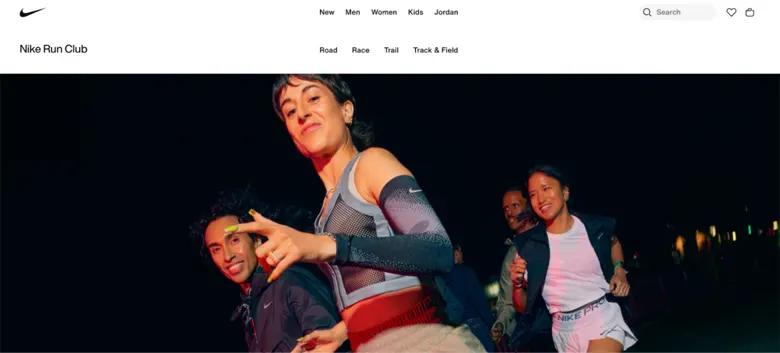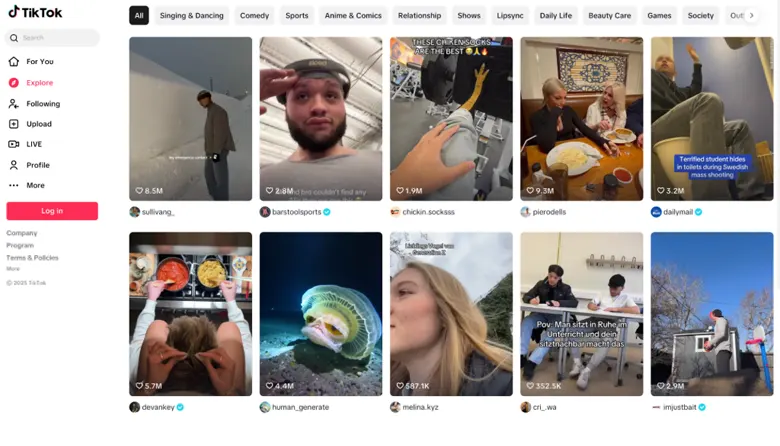Everything you ever wanted to know about digital product design plus the industry-leading examples defining the future of digital products
smart copy and intuitive categorization to Spotify’s incredible personalization and uniformity across devices, apps, and services, everyone is offering seamless and aesthetically gorgeous user experiences that engage users and leave them wanting more.
But how do great digital products like these come about? The answer is digital product design.
Digital product design refers to the process of crafting user-centered experiences for digital platforms like websites, apps, and digital interfaces that seamlessly blend functionality, aesthetics, and technology to solve user problems and enhance every interaction. By following a set of key principles and embracing a user-first process, digital product designers are creating apps and services that meet user needs and exceed expectations across industries.
In this guide, we dive into the fundamentals of digital product design, its key principles and methodologies, and leading digital product design roles. In addition, we break down some industry-leading examples of digital product design and give you some concrete steps to take to learn more about this impactful field.
Contents:
- What is digital product design?
- Why is digital product design important?
- What are the key principles of digital product design?
- What is the product design process?
- Overview of roles in digital product design
- Leading examples in digital product design
- How to learn digital product design
- Conclusion
Let’s jump straight in!

What is digital product design?
Digital product design is the term used to describe an iterative process that design teams use to uncover innovative solutions to user challenges, optimize existing digital products, and create user-centric software, programs, and tools. In contrast to physical product design, this field involves items that users can purchase, download, or use on a mobile app, website, or other technological platform. In addition to websites and apps, these digital products might include computer programs, music or video production software, or video games.
Why is digital product design important?
Digital product design is a valuable discipline because it makes a significant difference in how users experience a product or a service and how they perceive the brand itself. Thanks to its user-centric approach, digital product design impacts the entire experience, including how users interact with the product, how intuitive and enjoyable it is to use, and how well it solves identified user challenges.
When a product is designed based on clear user needs, behavior, desires, and challenges, users are more likely to engage with it and purchase other products from the same company. This is because a user-centric product reflects positively on the brand, reinforcing its credibility, fostering loyalty, and establishing trust.
The result of these positive measures is a design that influences key business metrics, such as conversion rates, sales, and sign-ups. Visitors become paying customers, customers become repeat customers, and users become brand advocates. This ultimately drives business growth and brand success.

What are the key principles of digital product design?
Let’s dive into the theory behind digital product design that makes it such a successful and widely adopted approach.
1. User-centered design
One of the most important values in digital product design is creating products that are fully user-centered. This means that products are designed to meet the needs of the user, help them solve challenges, and support them in reaching goals. When effectively implemented, this approach helps products feel intuitive to access and interact with and ensures they follow patterns and rules that feel logical to the user.
User-centered design involves gathering and implementing user feedback throughout the design process via research and testing methods. This ensures that the design team makes decisions about the product based on real user data rather than working from their own assumptions. By prioritizing user opinions and feedback in this way, the design team is able to create a product that fully meets user expectations and creates effective, engaging, and intuitive interfaces.
2. Consistency and coherence
Consistency in digital product design refers to creating uniform elements such as buttons, colors, and layouts that function in a predictable and logical way across the entire interface. This coherent approach bolsters the overall user experience, as a unified visual and interaction language reduces the user’s cognitive load and optimizes usability.
Some examples of consistency and coherence in digital product design include:
- Consistent color palette, typography, iconography, and layout style
- Consistent behavior of all interactive elements like buttons and menus
- Consistent tone, language, and messaging across all content
- Structure, organized, and logical presentation of information to mitigate confusion
3. Simplicity and usability
Simplicity and usability involve creating a clean, uncluttered interface with any unnecessary elements removed. Rather than including every new idea on a page, designers focus on essential features, building a visual hierarchy that is clear and easy to understand. When this is achieved, overall usability is enhanced as users can navigate the layout easily and interact with the elements that help them achieve their goals.
4. Accessibility
Accessibility is crucial to digital product design as it enables those with physical, sensory, or cognitive disabilities to fully enjoy and benefit from digital products. Accessibility also boosts the user experience for those without disabilities, as it has been found to generally improve the overall usability of a website, app, or digital product.
Color contrast, screen reader compatibility, and keyboard navigation are just some examples of the ways that designers can ensure the accessibility of their digital products. However, it’s recommended that design teams follow recognized initiatives such as The Web Content Accessibility Guidelines to be sure they have examined their product from every angle through the lens of accessibility.
By taking accessibility seriously, a brand can appeal to a much wider audience, help users feel seen and included, boost the user experience for everyone, and be sure they’re complying with legal accessibility and inclusivity requirements.

What is the product design process?
What does the product design process look like in practice? We’ve broken it down into its four main stages: Research, Ideation, Prototyping, and Testing so you can see how the process works and how each stage impacts the end result.
1. Research
During this phase, the digital product designer conducts extensive research into the product’s target user, gathering valuable data and insights into their digital experience with the existing product (or similar products). During this phase, the design team will identify areas for improvement or decide to design an entirely new product or feature.
2. Ideation
During the second phase, ideation, the design team thinks up a range of possible solutions to the identified user challenges uncovered during the first phase. This usually involves brainstorming, mind-mapping, and other activities that prompt out-of-the-box thinking and innovative solutions. By the end of the ideation phase, the team has often agreed upon a solution to take forward to the next stage of the process.
3. Prototyping
The third phase, prototyping, sees the team create low-fi sketches, wireframes, mock-ups, and eventually interactive prototypes which effectively convey the design with different levels of detail. These prototypes can be used to communicate the design to project stakeholders and management as well as other invested teams, helping the design team verify the viability and feasibility of their designs before taking them forward to the next stage.
4. Testing
The last phase before the design team hands their prototypes to the development team is testing. The team will observe users as they interact with the prototypes to help them identify any issues with the design and to gather data and feedback on where it might be improved. The team might ask users questions while interacting with the prototype or hand out questionnaires after the users have been asked to complete a specific task.

Overview of roles in digital product design
The digital product designer is often one of a design team whose members bring a wide range of expertise to the table. Let’s look at the range of designers the digital product designer is likely to collaborate with.
1. Product designer
The term “product design” refers to the processes and methodologies involved in designing and creating digital and physical products. While the term can refer to the creation of physical objects, it is increasingly associated with the design of digital products. (These days, the design and creation of physical products are more commonly referred to as “industrial design”.)
The product designer’s role is grounded in user research. This research is used to inform design decisions that optimize the user’s experience with the product. However, unlike the UX designer who is concerned with elements of the process that relate solely to the user experience, the product designer is involved with a product’s design from start to finish, including, for example, manufacturing processes and workflows.
Alongside conducting extensive user and market research, the product designer will come up with solutions to challenges, work closely with stakeholders, liaise between designers and engineers, and build wireframes and prototypes. To achieve all of this, they need to have an overarching view of a project, with the major goals of both the business and the user at the forefront of their decision-making. However, while this bird’s eye view is essential to managing each project, the product designer is also required to be aware of the details needed to successfully execute it.
2. UX designer
A UX designer (user experience designer) is primarily concerned with users having a positive experience while using a product, for example, when trying to complete a task or perform an activity.
The reason user satisfaction is so valued is that when a user enjoys their experience with a product, they are more likely to keep interacting with and returning to it, often becoming loyal to the brand.
To create engaging, accessible, and intuitive experiences that support users in achieving their goals, a UX designer focuses on optimizing every touchpoint a user has with the product and brand. Typical tasks in this role include user research, creating personas, designing wireframes and interactive prototypes, and testing designs. These methods ensure that the user’s experience and the usability of the product remain central to the design process.

3. UI designer
A UI designer (user interface designer) is responsible for designing the user interface of a digital product like an app, website, software, or other digital environment. It is this interface that users interact with to find what they are looking for and reach their goals.
The UI designer aims to make the interactive process behind navigation and exploration as logical, seamless, and intuitive as possible by crafting clear and attractive visual design elements. Whether deciding on the color of a button or the typography of label text, the UI designer seeks to create a visual experience that supports the user, guiding them effortlessly to exactly where they want to go.
4. Interaction designer
As the name implies, an interaction designer shapes how users interact with digital products, focusing in particular on crafting engaging and seamless user experiences. These points of interaction on an interface typically refer to buttons, menus, and transitions between pages on a website, app, or other digital interface.
To achieve their goal of creating positive interactive experiences, the interaction designer works closely with teams of UX designers, developers, and product managers. In this role, one is responsible for optimizing user flows and developing interactive prototypes that lead to the implementation of cohesive, user-friendly, and intuitive experiences.
5. Visual designer
A visual designer is concerned with a brand's visual identity. This involves applying their knowledge of color theory, typography, and graphic design to craft a unique and compelling visual identity for a brand that aligns with its existing mission, values, and personality (the set of human characteristics attributed to a brand).
They use their creative skill, insights into the target user base, and knowledge of the latest visual design trends to establish this visual identity and ensure it aligns with users’ existing impressions of the brand. In addition, visual designers are responsible for ensuring that the visual look of the brand is cohesive and consistent across all digital and physical platforms, including social media platforms, apps, websites, and on- and offline advertising.
Leading examples in digital product design
Let’s take a look at some of the leading players in digital product design: Sorted, Nike Run Club, and TikTok. We examine how they’ve successfully managed to leverage user data to create memorable and market-leading user experiences with their digital product design.
1. Sorted

If you’re a freelancer, you may have already heard of Sorted, the tax and income management app for the self-employed. The app aims to simplify tax and finance-related tasks such as filing tax reports, tracking income and expenses, and staying ahead of financial deadlines.
Sorted is a great example of a simple yet effective digital product design. Traditionally, filing taxes is a stressful administration task for freelancers and involves hiring a tax specialist. Sorted has simplified this task thanks to its intuitive platform and expert guidance, enabling individuals with no accounting experience to take on these tasks themselves. Clear labeling and a clean interface mean that users can log their earnings and expenses in no time while categorizing transactions are transparent and straightforward.
Other great product features that meet the needs of this target user group include calculating tax estimates, real-time updates on tax deadlines and filing statuses (reducing the risk of fees or penalties), and enabling seamless integration with other financial tools such as the business banking app Qonto.
Sorted is a fantastic digital product for freelancers who want to alleviate the headache of tax returns, stay in line with financial regulations, and organize their income and expenses in a quick, transparent, and affordable way.
2. Nike Run Club

Whether you’re a fitness beginner or a running aficionado, you’ve probably heard of Nike Run Club, an app launched more than a decade ago to help users track their runs and feel motivated to reach their fitness goals. Nike’s objective is to serve athletes at every level of fitness and help them maintain healthy running regimes.
The app does this by offering:
- Real-time audio coaching with different coach personalities to suit user preferences and needs
- Guided running workouts for different lengths and types of run
- Full integration with the Apple Watch
- Custom coaching plans
- An online community
- Gamified elements that motivate and encourage social engagement
What makes Nike Run Club such a great example of product design is its focus on simplicity and gamification that encourages users to keep to their fitness goals.
In terms of simplicity, the app displays big, bold numbers on its interface, helping users stay focused on the most important metrics. It provides a clean, simple interface that makes navigation between features intuitive and effortless, and incorporates a visual design that fully aligns with the sleek, athletic aesthetic associated with the Nike brand. For those new to running, these features encourage interaction and make setting up the app and following the numbers easy. Users can go from non-runner to a runner in just a few clicks and steps.
The gamified elements of the app make the design compelling to users, prompting them to return again and again. The following are just some of the gamification elements that help users to reach their goals:
- Celebrates user achievements with instant feedback
- Encourages healthy competition with user leaderboards
- Fosters a sense of community with its social media features
- Offers prizes for meeting specific goals
- Notifies users of increasingly tougher challenges
- Easy to share achievements – making users more accountable
- Clear and easy-to-follow progress measurement
By rewarding runners with notifications and awards, and encouraging social accountability, the app helps users to keep up their running habits, reach and exceed their goals, and stay committed to positive fitness habits.
3. TikTok

Founded back in 2016 and still immensely popular, TikTok is a social media platform created in China that is popular with younger generations for creating, sharing, and discovering videos. These user-submitted clips which are accessible via either the mobile app or on the company’s website, range in duration from three seconds to sixty minutes, with many users expressing themselves through singing, comedy, dancing, or challenges that are then shared across communities.
There are a few key reasons why TikTok is such a successful digital product. First of all, the app’s intelligent use of algorithms means that users are shown content that aligns with their preferences and interests. It does this by continuously analyzing user interaction data to inform the curation of personalized content. This leaves users always coming back for more.
Next up, is the immediacy of the content. Unlike other social media platforms, users are able to watch videos after one click, by registering an account using an existing email or social media handle. In comparison to an app like Instagram which requires onboarding data before users are shown any content, this decision by TikTok demonstrates that they know how important it is to give users what they want before they lose interest or go somewhere else. In addition, when the user reaches the content page, they do not need to press play, or in fact do anything; a video is always already playing when they reach the main page.
Finally, the app uses natural and familiar gestures that users will know from interactions with other social media apps. For example, like Instagram, a double-tap on TikTok indicates a user has ‘Liked’ a video while swiping up will reveal the next video in their feed. By not trying to reinvent how users interact with the app, but instead embracing how they already do it, TikTok has created a product that is very familiar to users and eliminated the friction that comes with learning a new interface.
How to learn digital product design
Here’s a summary of the steps you need to take to learn digital product design.
1. Learn skills and theory of product design
Your first step to learning more about digital product design is to get to grips with its principles, methodologies, and tools. You can do this by studying for a product design degree, pursuing a product design online course, or even learning with a local higher education college. When considering which approach is right for you, consider your end goals.
It may help to ask yourself the following questions:
- Are you hoping to launch a career in the field or are you simply interested in knowing more?
- Do you need certification to reach your goals?
- Would you like mentorship or hands-on guidance or are you happy to study alone?
- Would you like career support?
- Would you like to work on a portfolio?
- What is your budget?
- How much time can you commit to studying?
When you have narrowed down your objectives, you’re in a better position to know which type of course is right for you.

2. Stay up to date with the industry
While a structured course will help you learn the principles of digital product design and how to apply them, it is worth investing your free time in staying up to date with the industry. This is especially important if you’re thinking about launching a career in the field, as employers will want to know that you’re informed about industry trends and tools.
We’ve compiled some of the leading digital product design blogs, podcasts, and social media accounts to follow to ensure you stay ahead of the curve, gain design inspiration and advice, and keep your output fresh and relevant.
Blogs
Learn valuable industry insights to improve your design outcomes with these top digital product design blogs.
Podcasts
Check out these product design podcasts for insider advice on succeeding in the industry.
- Design Details with Brian Lovin and Marshall Bock
- Wireframe Podcast by Adobe
- Design Better with Eli Woolery and Aarron Walter
- UI Breakfast Podcast with Jane Portman
- The Hacking UI Podcast with Sagi Shrieber and David Tintner
- UX Questions with Ben Judy
- UX Institute - UX Research & Product Design with Mark Swaine
Social media accounts
Make sure you follow these digital product design influencers for inspirational design stories and content.
- Matthew Encina @matthewencina
- Talia Cotton @taliasaccount
- Michelle Romo @monstromo
- Kim G @kimbyarting
- Jacquelynn Harris @jaqirabbit
Suggested image: FILE #: 746577613
3. Apply your knowledge
The best way to learn about digital product design is to get some hands-on experience. Once you’ve taken a course and done some extra research, you’ll be in a great position to apply for an internship, take on freelance projects for friends or family, or shadow an established digital product designer.
If you don’t feel ready to put yourself out there just yet, don’t worry. You can also create your own digital products from home, for example redesigning or improving on existing apps or creating one from scratch.
Getting some hands-on experience will give you a chance to:
- Learn how to use the latest design tools
- Become fluent in the design process
- Get practice documenting your progress
- Learn from your mistakes in a low-stakes setting
- Apply your learning
If you’re working on a portfolio, it will also give you projects to include, illustrating your skills and strengths. This will be especially useful for digital product design job applications and interviews.
However you choose to do it, applying your knowledge of digital product design in the real world is an important step in understanding how the industry works.
Conclusion
There you go – a complete guide to digital product design, including the design process, key roles in the field, leading examples, and how to learn it. As we’ve seen from industry leaders Sorted, Nike Run Club, and TikTok, this is a field that requires deep knowledge of the target audience and their needs. If you’re someone who is fascinated by how users tick, and how to turn user data into tangible concepts and designs, then this could be a great industry for you to explore. By following the steps we’ve outlined, you’ll be in a great position to apply for your first position as a digital product designer. In this important role, you’ll have the chance to impact and improve the experience of digital product users everywhere. You can also check out this project by AND Learner, Vikas Sen, to further gain insights into turning user needs into useful products.
Next Steps
If you’d like to learn more about design, we’d recommend you head over to the AND Academy Design Blog for more articles like this one. In case you think you need further assistance, here are some of our resources you can consider:
- Watch this session by Shiva Viswanathan, Design Head of Ogilvy Pennywise, and Naman Singh, Product Experience Designer at RED.
- Talk to a course advisor to discuss how you can transform your career with one of our courses.
- Pursue our UI UX Design courses - all courses are taught through live, interactive classes by industry experts, and some even offer a Job Guarantee.
- Take advantage of our scholarship and funding options to overcome any financial hurdle on the path of your career transformation.
Note: All information and/or data from external sources is believed to be accurate as of the date of publication.










